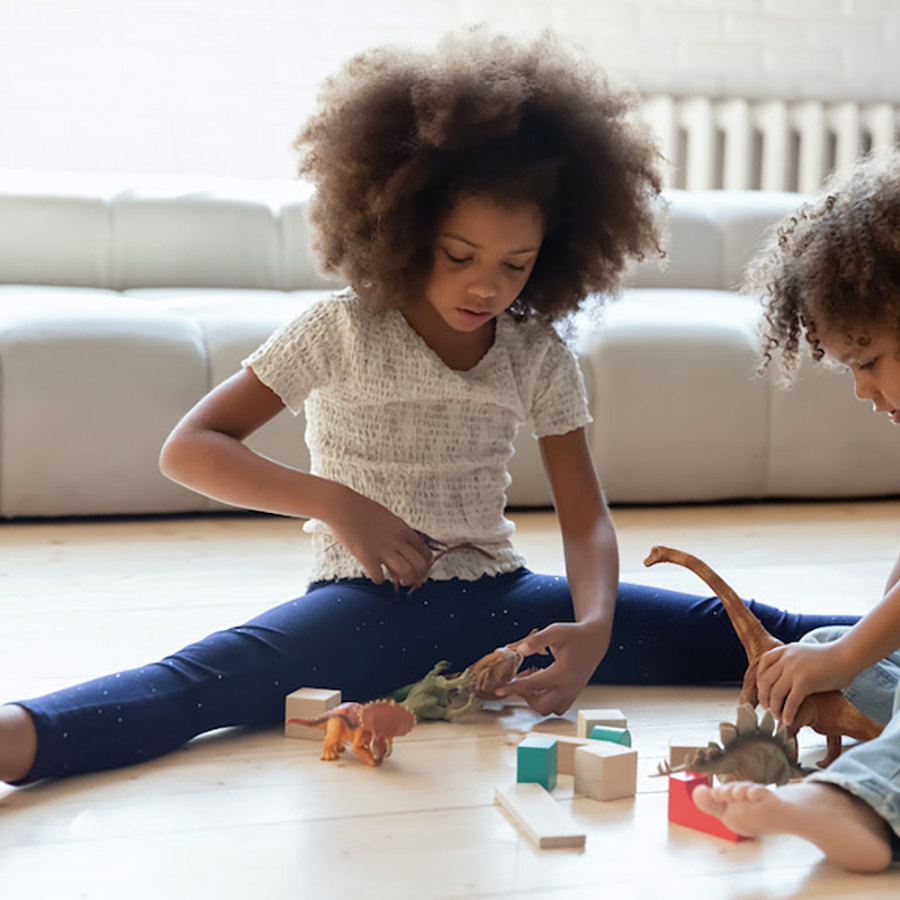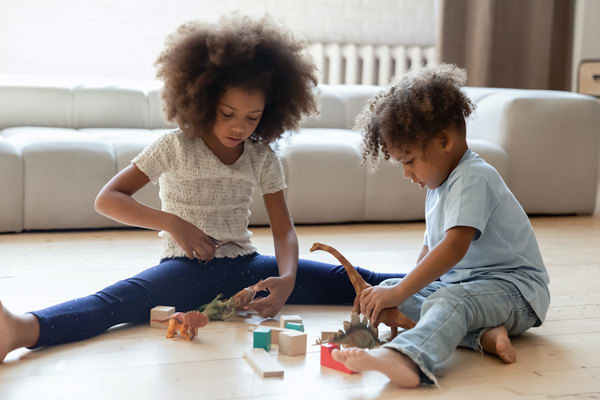
If two sisters marry two brothers, how related are their children?
February 24, 2005

- Related Topics:
- Complicated family trees,
- Relatedness,
- Recombination
A curious adult from Canada asks:
“My sister married my husband’s brother (so we have two brothers who married two sisters). We are all curious about how related our children will be. (I’m pregnant with our first child right now.)
I understand siblings share 50% of the same genes. In our case would the first cousins be as genetically related as siblings? If no - can you tell us exactly how related they will be?”
What a fun question. And really hard too.
This type of relationship is sometimes called “double first cousins”. The kids would end up being about twice as related as regular first cousins (who share 12.5% DNA). And at 25% shared DNA, that would make them about as related as half siblings.
Keep in mind that this is only on average. The true amount of shared DNA may be a bit higher or lower, mostly due to random chance and how DNA is inherited.
Mixing up chromosomes
If we think about you and your sister, you each got half your DNA from your mom and half from your dad. What does that really mean, though?
Remember, almost all of our genes are found on 23 different chromosomes. We each have 2 copies of each of these chromosomes (except for males who have an X and a Y instead of two X's). This also means that we have 2 copies of nearly all of our genes.
When an egg or a sperm gets made, each of the two chromosomes is randomly sorted so that the sperm and egg only get 1 of each chromosome. Does this mean that you have mom or dad's exact same chromosome?
No. We are all much different than that. Before the chromosomes get sorted out, there is a lot of mixing and matching between two of the same chromosomes. This is called recombination.
For example, your chromosome 5 is not an exact copy of mom or dad's chromosome 5. The chromosome 5 your dad gave you is a mix of both copies of his chromosome 5 -- it isn't exactly the same as either one by itself.

DNA mutations
Even if your sister and you were identical twins, there would be some differences between her and your DNA.We all build up mutations in our DNA over time. Most of these DNA changes are harmless although some can lead to diseases like cancer.
Where do these changes come from? Some come from the stuff our body does everyday. For example, we all start out with a single cell and end up with somewhere around 50 or 100 trillion cells.
The DNA in all of these cells needed to be copied (not 100 trillion times but a lot). The machinery in our cells that copies our DNA is incredibly good at what it does, but not perfect. Occasionally, it makes a mistake that is not fixed.
Our DNA also changes in response to things like sunlight or the food we eat. Both can damage the DNA causing mistakes to happen.
If any of these changes happen in an egg or sperm cell, then that change will be passed on. This would mean you and your sister's kids would be just a bit different. Of course, 100 or so changes out of 3 billion isn’t much!
And I haven't even started on how the environment can affect DNA and what changes might come from that! Tough question, but it really got me thinking about all of this. Thanks!
Editor’s Note (7/2/21): This article was edited for length and clarity.

Author: Dr. Barry Starr
Barry served as The Tech Geneticist from 2002-2018. He founded Ask-a-Geneticist, answered thousands of questions submitted by people from all around the world, and oversaw and edited all articles published during his tenure. AAG is part of the Stanford at The Tech program, which brings Stanford scientists to The Tech to answer questions for this site, as well as to run science activities with visitors at The Tech Interactive in downtown San Jose.
 Skip Navigation
Skip Navigation
